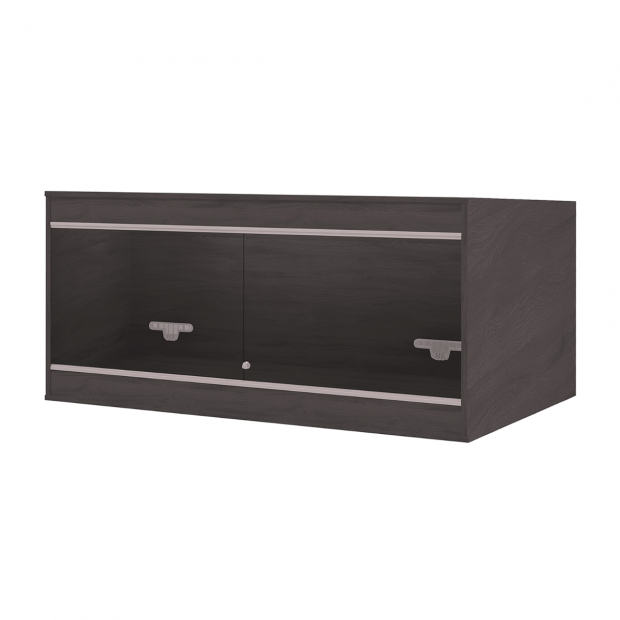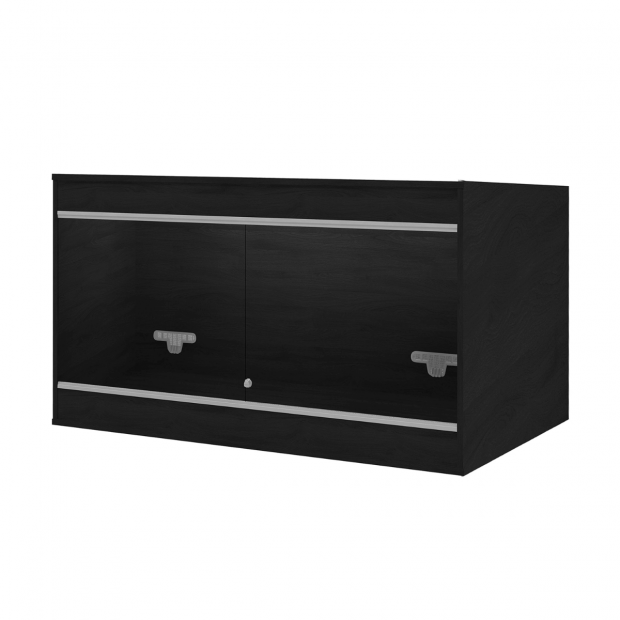- European eyed lizards are large lizards with stunning patterns
- Perfect for more experienced keepers looking for a challenge
- An intelligent and highly rewarding pet to keep
Do European eyed lizards make good pets?
European eyed lizards, otherwise known as Ocellated lizards or Jeweled lacertas, are a fairly large lizard that inhabits various countries in Europe, such as Spain, Portugal and France. They inhabit arid areas, from woodlands and grasslands to vineyards and olive groves where they take refuge in burrows and foliage. Jeweled lacertas can become territorial and cohabitation often leads to serious fights, so cohabitation should not be attempted with this species.
As European eyed lizards are quite large, they do require a lot of space and can also be quite defensive and unpredictable which makes them a better option for more advanced hobbyists. All of the Ocellated lizards for sale at Swell Reptiles are captive bred in the UK and are usually young, so not only will they be healthy and free of parasites, but will be more likely to tame down than a wild caught individual would.
What size vivarium does a Jeweled lacerta need?
Due to their large size, Ocellated lizards require an enclosure size to match, here we recommend a minimum adult enclosure size of 150 x 90 x 60cm (5 x 3 x 2ft) which usually needs to be a custom build. A slightly smaller 120 x 60 x 60cm (4 x 2 x 2ft) such as the VivExotic Repti-Home Bearded Dragon Vivarium Large is not a bad option for a juvenile, but it would need to be upgraded before long.
What temperature range does a European eyed lizard need?
Jeweled lacertas require high temperatures, even in their cool end, preferring a basking temperature of 40-42°C (104-107°F) and cool end temperatures remaining between 32-35°F (89-95°F). To achieve these temperatures, an overhead heating system should be used, such as a basking lamp and dimming thermostat, or ceramic heat emitter and pulse thermostat.
In cold homes, a heat source may be required on both sides of the vivarium, both of which should be controlled by a thermostat. However, we recommend setting up one heat source and monitoring the temperatures with two accurate thermometers before adding a secondary heat source, as it may not be needed.
Ocellated lizards do not require overnight heating in most homes, comfortably tolerating drops to around 15°C (59°F). Allowing a nighttime temperature drop like this provides a much more natural experience, so if you do still need to provide overnight heating, this should be non-light emitting and should be set to a lower temperature than during the day.
Do European eyed lizards need UVB?
Jeweled lacertas require a UVI between 3-4, which will enable them to metabolise vitamin D3 and prevent serious health conditions such as metabolic bone disease. This can be provided using an Arcadia ProT5 Kit - Forest 6% placed 30-40cm (12-15”) above the highest basking point, or an Arcadia ProT5 Kit - Desert 12% positioned 40-60cm (15-24”) above the highest basking point.
What type of substrate do Ocellated lizards need?
We recommend using sandy, rocky substrates for a European eyed lizard, something like Lucky Reptile Desert Bedding, or sand-soil mixes such as Arcadia EarthMix Arid for bioactive enclosures. Using this type of substrate will allow your Jeweled lacerta to exhibit natural behaviours like digging and burrowing, whilst enhancing the overall aesthetics of the set-up.
How do I decorate a European eyed lizard’s vivarium?
Ocellated lizards are an intelligent species, so their environment should provide them with lots of stimulation. Their enclosure should be littered with logs, cork, foliage, branches and vines, either in the form of real or artificial plants. At least two completely covered hiding areas should be provided in either end of the enclosure, either by using pieces of natural decor or a reptile hiding cave. A large water dish should also be provided for hydration and soaking during the shed cycle.
What do European eyed lizards eat?
Jeweled lacertas are omnivorous, but the main portion of their diet should come from livefood. They can be fed the occasional frozen mice, but this should be kept infrequent to avoid too much weight gain and related health issues. Vegetation and fruits can also be offered from time to time, the key to a good diet for an Ocellated lizard is variety.
Any livefood or vegetation offered to a European eyed lizard should be supplemented according to a schedule, for this we recommend a calcium-rich multivitamin on every feed, such as Arcadia EarthPro-A, a calcium plus magnesium supplement on every fourth feed, such as Arcadia CalciumPro Mg and finally, a vitamin D3 supplement on every eighth feed such as Arcadia EarthPro RevitaliseD3.
How do I buy a European eyed lizard?
If you would like to purchase one of our UK captive bred European eyed lizards, you will need to collect this from our store. For any livestock sold by us, we require photos of a suitable set-up, already with the correct temperature, humidity and UVB parameters to ensure they only go to suitable homes.
Come into our store and see us, if you want to take one of our Jeweled lacertas home, we will ask a few quick questions and ask to see your photos to ensure you are ready for the commitment of this beautiful lizard. We reserve the right to refuse adoption to anyone we feel is unprepared to adopt.
To learn more about reptile care you can check out our blog posts like our Ackie monitor care sheet or our Western hognose snake care sheet.
| Common names | European eyed lizard, Jewelled lacerta, Ocellated lizard |
| Scientific name | Timon lepidus |
| Country | Western Europe |
| Captive-bred | Yes |
| Adult size | 60cm (24in) |
| Natural habitat | Open, arid woodland, scrub land and grassland habitats |
| Housing | 150 x 90 x 60cm (6 x 3 x 2ft) |
| Ideal temperature | 40-42°C (104-107°F) (warm end); 32-35°F (89-95°F) (cool end) |
| UVI | 3-4 |
| Ideal humidity | 40-50% |
| Diet | Omnivorous |
| Average lifespan | 8-12 years |
| Personality | Stubborn and unpredictable, but can be tamed |
| Ease of handling | Moderate-difficult |
| Cohabitable | No |
-
 Ackie monitor, Varanus acanthurusFrom £275.00Out of stock
Ackie monitor, Varanus acanthurusFrom £275.00Out of stock -
 Ornate plated lizard, Zonosaurus ornatusFrom £60.00In stock
Ornate plated lizard, Zonosaurus ornatusFrom £60.00In stock -
 Starred agama, Stellagama stellioFrom £90.00In stock
Starred agama, Stellagama stellioFrom £90.00In stock -
 Desert collared lizard, Crotaphytus collarisFrom £195.00In stock
Desert collared lizard, Crotaphytus collarisFrom £195.00In stock







